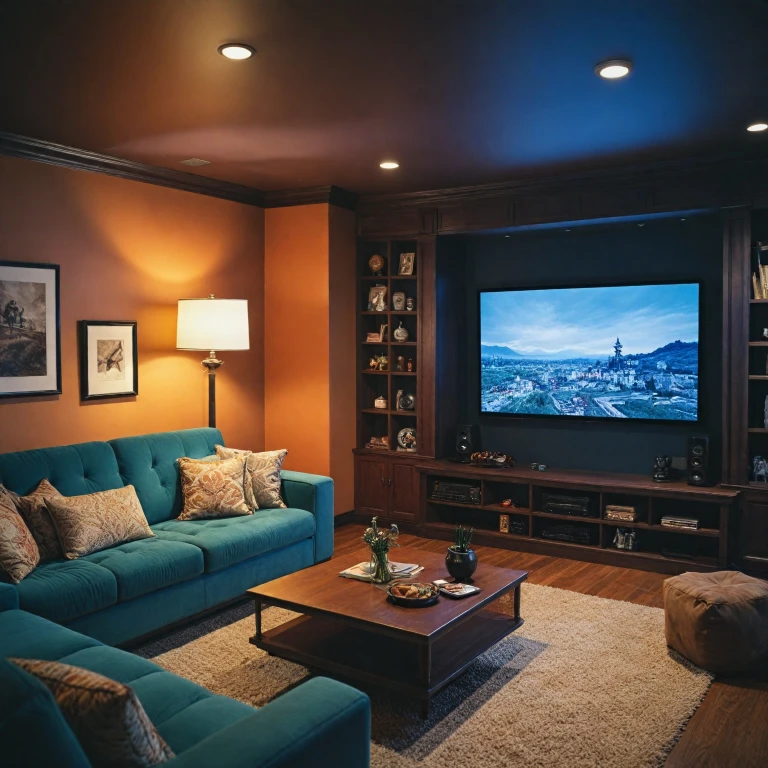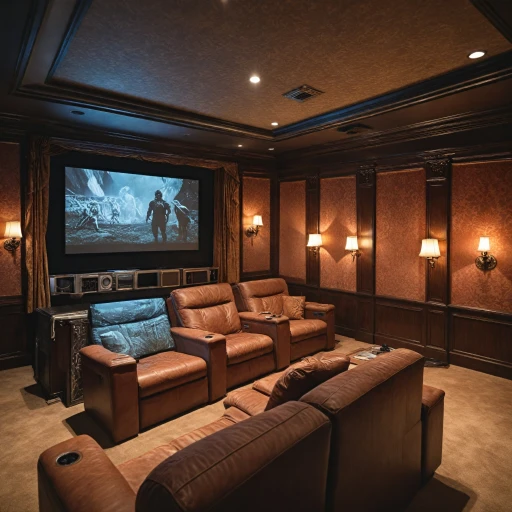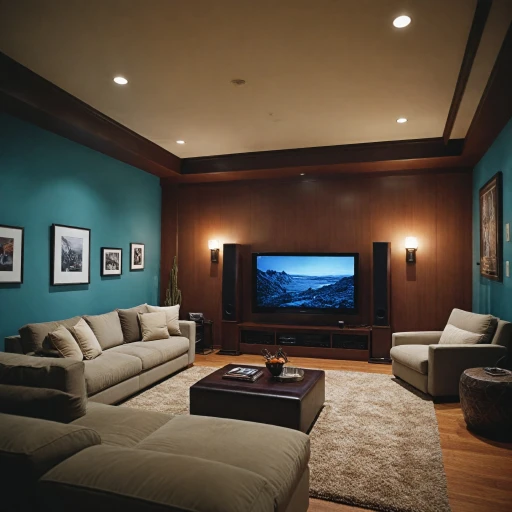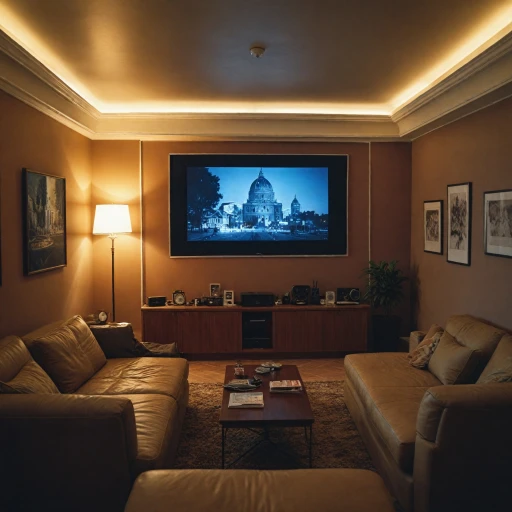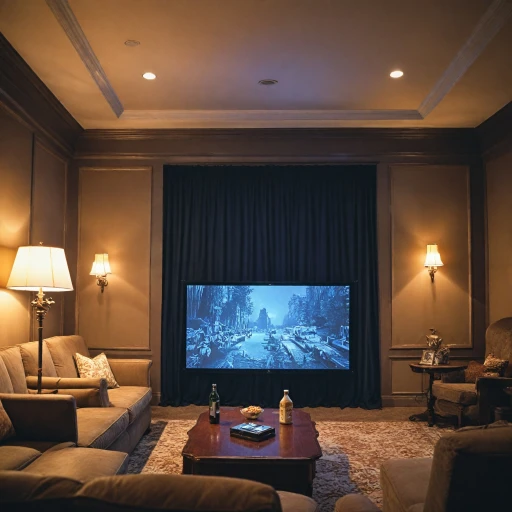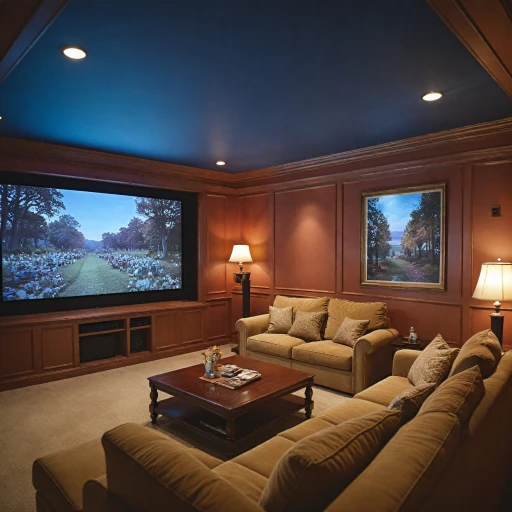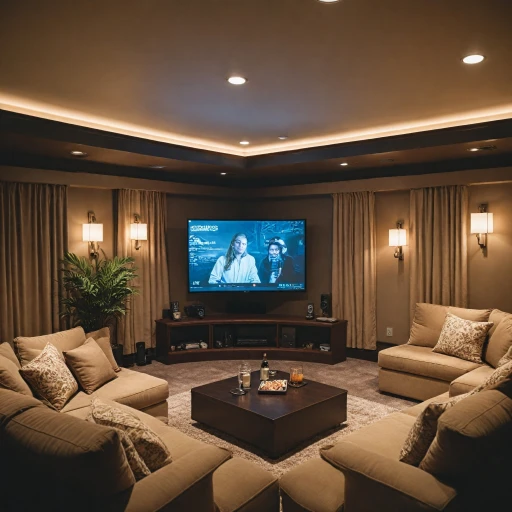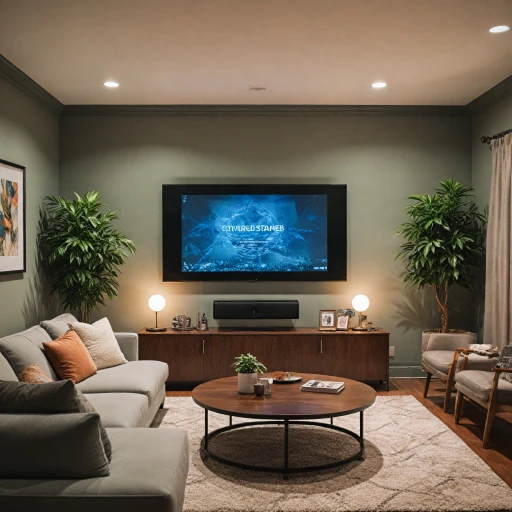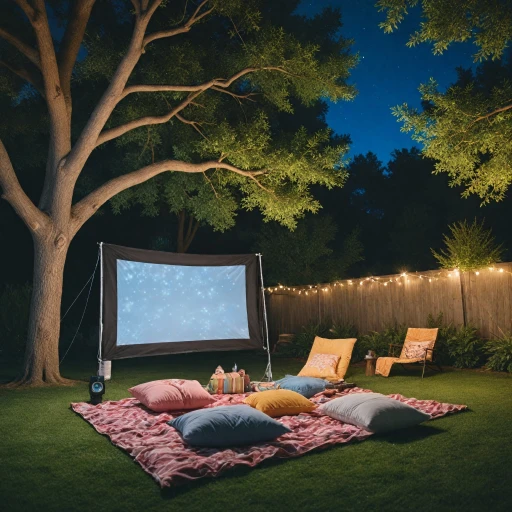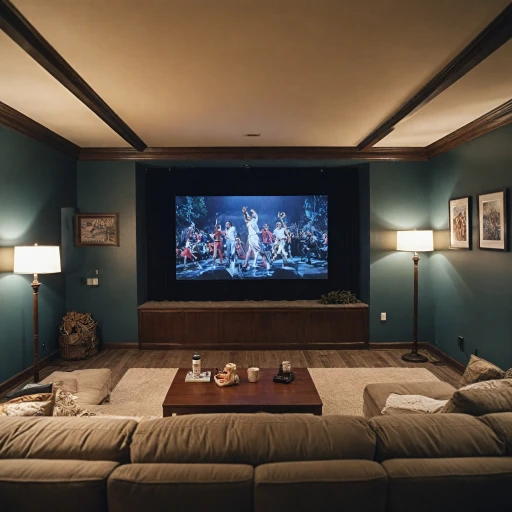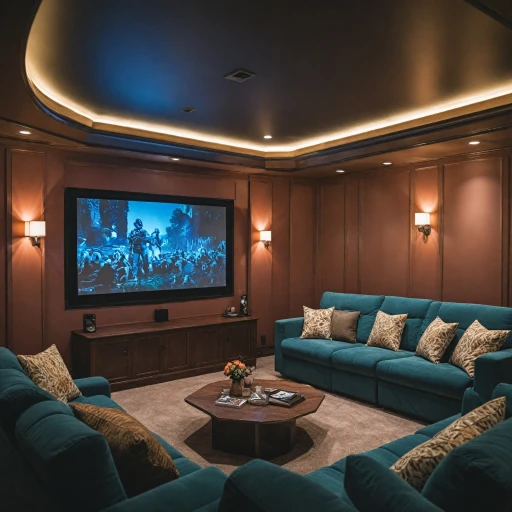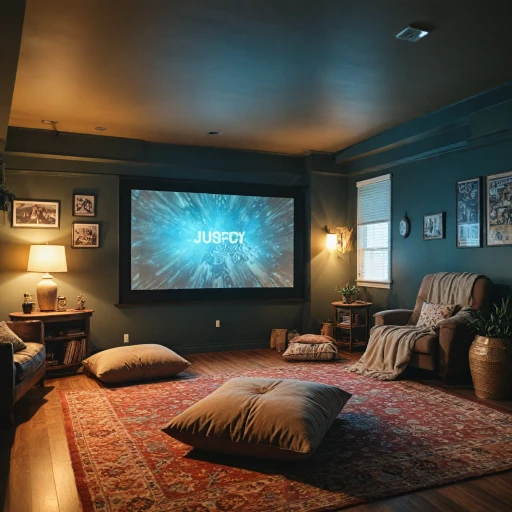
Understanding the Benefits of a Mounted Projector Screen
Maximizing Visual Quality with a Mounted Screen
Investing in a mounted projector screen can significantly enhance your home theater experience. With benefits like improved image quality and space utilization, it's hard not to consider this upgrade. Mounted projector screens allow for a clean installation, eliminating clutter and ensuring that the focus remains on your visual content. A key advantage is the ability to select from various screen materials like matte white and high contrast screens, which are essential in optimizing the reflection quality and color accuracy of your projection. Elite Screens offers a range of options like fixed frame and tab tensioned projector screens, allowing you to choose what suits your needs based on room size and light conditions. Mounted screens are particularly effective in managing ambient light. In settings where light control is challenging, selecting screens with a high gain can make a noticeable difference. Such screens enhance brightness and maintain image clarity. The durability of these products makes them a worthy investment, supporting long-term use without compromising on performance. While the initial price might seem like a considerable expense, the benefits in terms of enhanced image quality and the immersive experience make it worthwhile. The increased clarity and color fidelity are especially noticeable in larger formats like an 120-inch projector screen, transforming your viewing experience into something akin to a theater. For more insights into optimizing your space with a mounted screen, you might find this link useful, as it covers solutions tailored for challenging environments.Choosing the Right Location for Your Mounted Screen
Spotting Optimal Locations for Your Projection Setup
Selecting the right location for your mounted projector screen can significantly impact your home theater experience. Choosing wisely can offer the best projection quality while enhancing the overall aesthetic of your space. Here’s what to consider:- Wall or Ceiling?: Determine whether your projector screen is best suited for wall or ceiling installation. Fixed frame screens generally work better on walls, while tab tensioned projector screens can hang securely from the ceiling. Your choice depends on the room's layout and existing decor.
- Room Dimensions and Screen Size: Make sure to evaluate the room dimensions. A smaller room may benefit from screens around 80-100 inches, while larger spaces might accommodate a larger projection screen. Consider elite screens for high-quality projection in various sizes.
- Ambient Light and Projection Quality: Ambient light can affect the viewing experience. Look for spaces with the least amount of natural light, or consider high contrast or matte white screen materials that minimize glare. This is crucial for maintaining clear, vibrant images.
- Viewing Angle and Comfortable Seating: Ensure the projector screen is placed so all viewers have a clear line of sight and comfortable seating. Placing the screen at eye level while seated can enhance the theater experience.
- Distance from Projector to Screen: Measure the distance where the projector will be positioned. This affects the size of the projection and clarity of the image. Most projectors come with a manual that details the throw distance appropriate for different inch projector screens.
Installation Tips for a Mounted Projector Screen
Key Tips for Installing Your Projector Screen
Proper installation of a mounted projector screen can significantly enhance your home theater experience. To begin, you should collect all the necessary tools and assess your wall or ceiling's compatibility with mounting hardware. Consider the following tips to ensure a smooth setup:- Evaluating Your Space: Decide whether you will be mounting the screen on a wall or ceiling. Consider the room's ambient light and its impact on the projected image quality. An elite series screen with high-gain or matte white material offers different benefits, depending on your light conditions.
- Choosing the Right Height: The center of the screen should be at eye level when you’re seated, typically around 42–48 inches from the floor. This enhances the viewing experience and minimizes neck strain.
- Securing the Frame: If using a fixed frame projector screen, ensure the frame is sturdy and secure. It should be installed using the appropriate anchors for your wall type. Projector screens of all kinds, like tab tensioned or manual options, should be double-checked for alignment.
- Handling Different Models: Models like the Yard Master and those with tab tension allow for different mounting styles and require specific installation techniques. Always refer to the screen item's product manual for detailed instructions.
- Testing Before Finalizing: Once installed, project an image and adjust the screen’s position to ensure it is perfectly square with your projectors. This helps you achieve crisp picture clarity consistent with elite screens.
Comparing Different Types of Mounted Screens
Exploring Various Mounted Screen Options
When it comes to enhancing your home theater experience, selecting the right type of mounted projector screen is crucial. Each type offers unique benefits, and understanding these can help you make an informed decision. Here’s a look at some of the most popular options:
- Fixed Frame Screens: These screens are known for their sleek design and are perfect for dedicated home theater rooms. They provide a tensioned surface that ensures a flat projection area, enhancing image clarity. The frame projector design often includes a matte white screen material, which is ideal for controlling ambient light.
- Manual Pull-Down Screens: If flexibility is a priority, manual screens are a great choice. They can be easily retracted when not in use, making them suitable for multi-purpose rooms. The price of these screens is generally lower, making them an affordable option for many.
- Tab Tensioned Screens: These screens offer a high-end solution with tensioning tabs that keep the screen flat. This feature is particularly beneficial for high contrast projections, ensuring that the image remains sharp and clear. The tab tension design is often found in elite screens, known for their superior quality.
- Electric or Motorized Screens: For those seeking convenience, motorized screens provide an effortless experience. They can be controlled with a remote, allowing you to adjust the screen with ease. This type of screen is ideal for ceiling or wall installations, offering a clean and modern look.
- Outdoor Screens: If you’re looking to take your viewing experience outside, consider screens like the Yard Master series. These are designed to withstand outdoor conditions and provide a large projection area, perfect for backyard movie nights.
When choosing a screen, consider factors such as the size of your room, the type of projector you have, and your budget. The gain of the screen, which affects brightness, and the screen material are also important considerations. Whether you opt for a wall mounted or ceiling mounted screen, ensure it complements your projector’s capabilities for the best viewing experience.
Maintenance and Care for Your Mounted Projector Screen
Regular Cleaning and Dusting
Maintaining your mounted projector screen is crucial for ensuring optimal performance and longevity. Regular cleaning is essential to keep the screen free from dust and debris, which can affect image quality. Use a soft, lint-free cloth to gently wipe the screen surface. Avoid using harsh chemicals or abrasive materials that could damage the screen material, especially if you have a matte white or high contrast screen.
Inspecting the Frame and Mount
Periodically check the frame and mounting hardware for any signs of wear or damage. This is particularly important for fixed frame and wall mounted screens. Ensure that all screws and brackets are securely fastened to prevent any sagging or misalignment. If you notice any issues, consult the product manual for guidance on tightening or replacing parts.
Adjusting for Ambient Light
Ambient light can significantly impact the viewing experience. If your screen is near a window or other light source, consider using blackout curtains or shades to minimize light interference. For screens with a gain feature, adjusting the projector settings can help enhance image brightness and contrast in well-lit environments.
Handling Tab Tensioned Screens
For those using tab tensioned screens, it's important to regularly check the tension cords to ensure they are taut and evenly distributed. This helps maintain a flat projection surface, reducing any potential distortion. If adjustments are needed, refer to the manual for specific instructions on how to properly adjust the tension.
Addressing Common Issues
Common issues with projector screens can include wrinkles, discoloration, or mechanical problems with motorized models. For manual screens, ensure that the screen retracts smoothly and without resistance. If you encounter persistent issues, it may be worth consulting with a professional or contacting the manufacturer for support. Keeping an eye on these potential problems can save you from costly repairs or replacements in the future.
